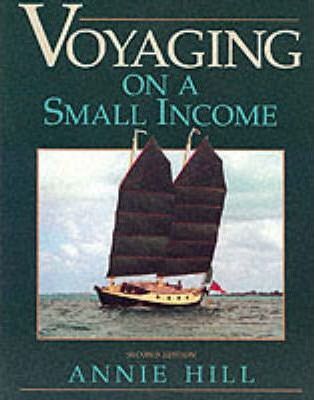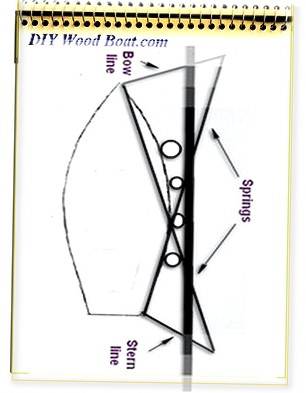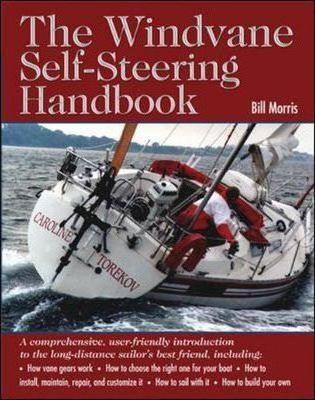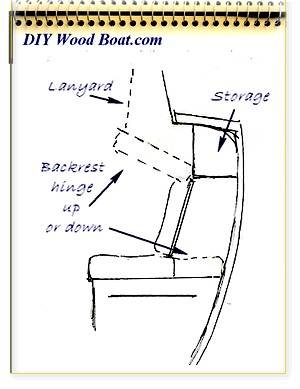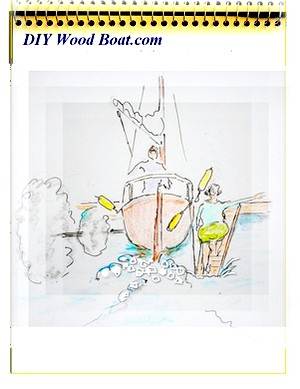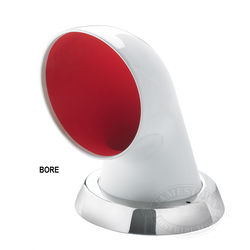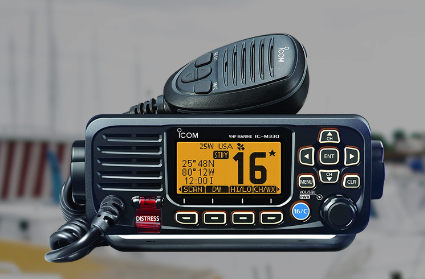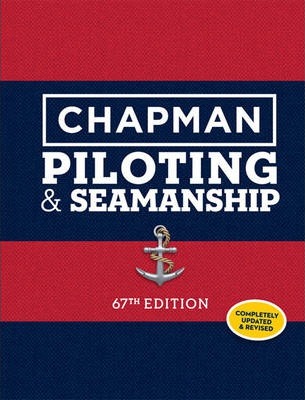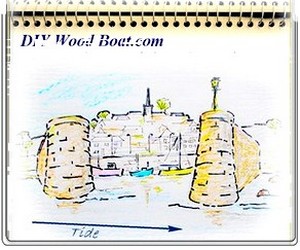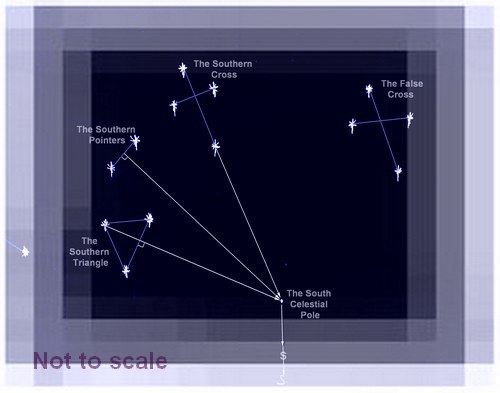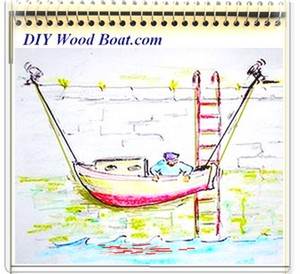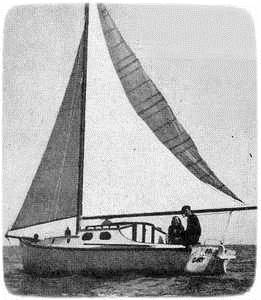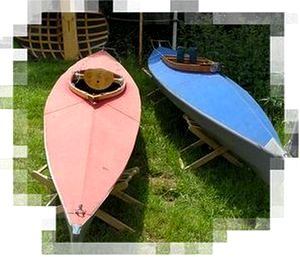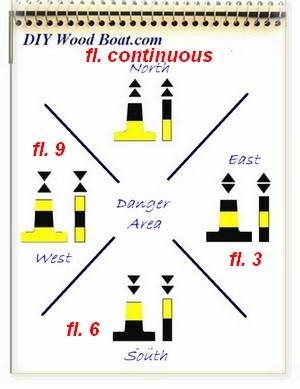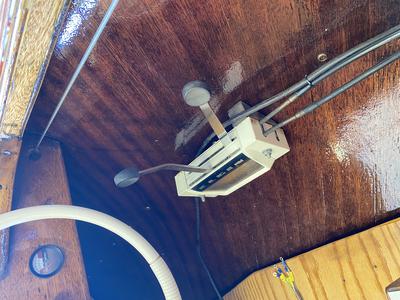- Home
- Your Boats
- Cruising
There's Nothing like Cruising in a Wooden Boat
The dream of cruising on your own boat can come true for anyone who really wants to.

And what better way to go than on your very own Wooden Boat.
Some folk dream of sailing around the world.
Perhaps you fancy following in the footsteps of Anne Bonny and John "Calico Jack" Rackham Island Hopping around the Caribbean.
Many are happy just gunk-holing up muddy creeks on a weekend.
Or perhaps you just want to paddle around inland waterways, lakes and rivers.
What ever your preference, having your own wooden boat is a ticket to freedom, adventure and romance.
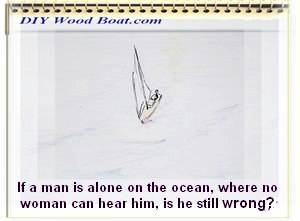
It will allow you to escape from the ordinary world, explore new places, experience the unexpected and take as many personal risks as you feel comfortable with.
Enjoy the open air, escape the overcrowded roads and commune with nature all in your own time.
All About Fishing, Boats and Sailing Boats is a site dedicated to everything about boats, from trailerboats to sailing yachts by yachtsman, marine electrical engineer and best selling boating book author John C Payne.
Small boat cruising
It is often assumed that cruising is for the rich but anyone can go cruising if they really want to.
If you wait until you can afford that big expensive boat chances are it will never happen.
If you are not wealthy and you want to go sailing and cruising, you can.
With a small boat the economics become much more realizable.
And you will probably do more sailing, and have more fun, than those with their super yachts, and with far fewer worries.
A small boat can even be rowed, eliminating the need for a motor.
You can explore tiny coves and inlets too shallow for deeper boats and have them all to yourself.
Of course if you want your boat to be a retirement home you would probably better off with a larger boat, one with standing head room.
If you need more convincing read "The Joy of Small-Boat Sailing" By Jack London.
Dinghy cruising
"Cruising has two pleasures.
One is to go out in wider waters from a sheltered place.
The other is to go into a sheltered place from wider waters."
(Howard Bloomfield)
Dinghy cruising is not just a poor man's substitute for proper yachting.
Many dinghies are potentially capable of covering great distances and carrying all the equipment that will be needed for overnight stops.
It is easier to find overnight stopping places for small boats as their shallow draft means that they can use mooring sites which yachts cannot reach.
And it is rare that dinghies will be asked to pay harbor dues.
It has been said that people are less prone to seasickness on a dingy.
If it is true it may be because of all that healthy fresh air.
It is not essential to carry an outboard motor as a dinghy can easily be rowed.
Besides it is worth the effort just to enjoy the peace and quiet, and it is non-polluting.
It goes without saying that cruising in a dinghy is not going to be as comfortable as in a larger yacht.
However if you enjoy camping, fishing, swimming or beachcombing you might find it more rewarding.
Besides, being able to trail your dinghy means you can explore distant waters without a lengthy sea passage to get there.
However, long sea passages in a dinghy are possible and numerous people have done them.
Safe handling of a dinghy does however, require knowledge of good seamanship.
A novice should start with a short passage where he is fairly sure he can cope with the conditions he is likely to meet.
More ambitious cruises can be considered as you gain experience.
Trailer boating
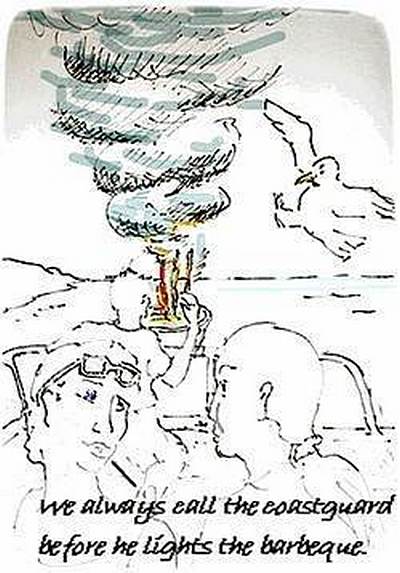
A small boat can easily be transported on a road trailer behind a car.
This means that a small trailer boat has greater flexibility to explore a variety of cruising areas.
You will be able to spend more of your time relaxing and exploring your chosen cruising area.
You can take best advantage of what small boat cruising has to offer regardless of how much free time you have available.
The other advantage is if your boat lives on its trailer in your garage or backyard, you will save on those expensive marina costs.
And you will not need to spend much on bottom paint, or worry about end of season haul-outs.
Canoeing
Apart from a floating log this is perhaps the oldest form of transport.
Canoe voyaging is not just for primitive people, but is one of the simplest ways to get away from the hurly-burly of modern life.
Nor does canoeing have to be an energetic method of travel as many canoes will take a small sail.
Combining the advantages of land camping with the mobility of paddling and sailing, canoeing is a cheap and invigorating way of life.
And these tiny boats can be easily launched and hauled out onto a beach.
Nor is there any need for a trailer, as they can easily be transported on a roof rack.
How about exploring the beautiful Oregon rivers and discover why you must visit here at least once in your lifetime, but be careful you might never leave.
Rowing boats
If you want to go paddling into new territory but find canoeing to daunting, a rowing boat such as a Dory could be the answer.
Being shoal draft they are ideal for exploring coastlines just as you would in a canoe or kayak.
However, being beamier than a canoe and more stable they would be safer for a family.
And they have the advantage of greater load carrying ability.
If you do not think you could go far in a row boat just check out those who have crossed oceans under oars alone.
Cruising Inland Waterways
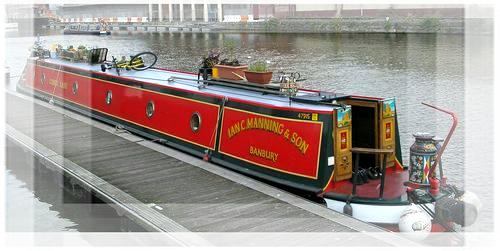 Canal Cruising in the UK
Canal Cruising in the UKFor really relaxed cruising nothing could be better than exploring waterways and canals.
Prior to the development of good quality road transport and properly surfaced roads the canal was the main method of transporting goods in many advanced civilisations.
Europe in particular is crisscrossed with a network of waterway links.
Nowadays these waterways are underused as means of commercial transport.
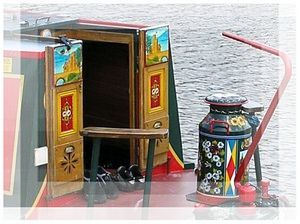 Canal Cruising Narrow Boat Art
Canal Cruising Narrow Boat ArtHowever, they are perfect for leisure boating.
However, the increase in the use of inland waterways for leisure has resulted in an increase in the bureaucratic rules and regulations.
So you will need to check that your boat complies with any current regulation before setting off.
A Boating Yarn from the French Canals The most relaxing way to explore the canals and waterways is on your own house boat.
Take your home with you as you go.
All About Houseboats is a visitor friendly website filled with valuable information for the new, curious, beginner, or experienced house- boaters.
Living Aboard
There can not be many who have not at some time dreamed of selling up and sailing off to a tropical island.
But to enjoy that free and easy existence means figuring out a way to supply yourself with the financial means to get by.
However, take heart, if you really want to do it and I mean really, really want to you can, just like others have done before you.
The decision to actually go can be the hardest part, finding reasons not to, is so easy and there will be plenty of people advising you why you should not go.
But if you are determined to go be prepared to evaluate realistically what size boat you will need and what gear will be essential.
Accept that it may take years of preparation but on the other hand there is a saying that if you wait until everything is ready you'll never get away.
One of the great joys of the cruising life is the other boat people you will meet.
There is a special camaraderie among the cruising fraternity.
It isn't unusual to find a singlehander from South Africa willingly climb the mast of the elderly American couple's boat, while the guy from the big Dutch boat helps to paint the little German one.
Some of the friendships one makes have an added piquancy, as you go your separate ways you wonder if you are ever likely to see this wanderer again.
Ever thought of living on a house boat?
Imagine being able to change your waterfront view anytime!
Feeling as though you were permanently on holiday!
And how about fishing from your front door?
- Electrics
- Boat Ventilation
- Mooring Techniques
- How to Anchor
- Storage and locker space.
- Would you like to work from onboard?

Navigation
Wherever you travel, it is as important to know where you are, at any time as it is to know where you have come from and where you are going.
While that might apply to any traveling it is imperative when crossing any open water.
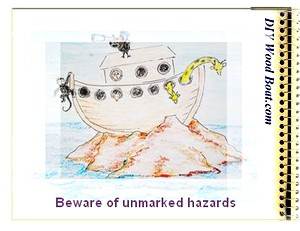
Spending time on the water can be great fun, but there are no street signs out there so you need a way to know where you are and the direction in which you need to go.
A Marine GPS system will take all the uncertainty out of your navigation.
However GPS sets rely on the use of electronic circuitry, unfortunately these are prone to malfunction if they were to get wet.
As GPS sets become more affordable the inclusion of a spare hand-held set sealed in a watertight container along with spare batteries has become a standard safety precaution.
However, it is doubly important to have paper charts and log books in which to record your position and course.
And that most basic of navigation aids is a reliable magnetic steering compass.
Other navigation equipment you should have are pilot books, tidal atlases and a means of plotting a course.
It is also worth carrying a spare compass which need only be of pocket type and a means of judging the depth of the water such as a simple lead line marked in meters.
But none of these are of use, unless you understand the basics of how to navigate.
Knowledge of dead reckoning and how buoyage systems work is essential.
Being able to chart your course using celestial navigation
is not only important for those who intend to cross oceans but is wonderfully satisfying to practice.
Cruising Plans
No journey on water should be undertaken without thorough and realistic planning.
The planning should include 'plan Bs' as well as 'plan Cs' to cover as many eventualities as possible.
Don't rely on the weather remaining settled or complications not occurring.
BooksCooking afloat
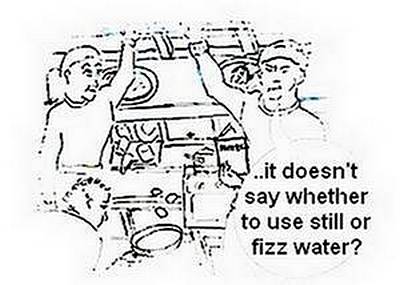
The most important aspect of stocking up for a cruise is ensuring you have enough drinking water, preferably more than sufficient for the cruise.
A rough guide is to carry at least 1.5L per each person per day.
What cooking equipment you carry will depend on how much storage space is available.
How much food you need to set off with will depend on the length of time you expect to be away from convenient shops, always stock some extra just in case.
The most idyllic anchorages are unlikely to have a convenient supermarket nearby.
There are many convenient food items available which take up little space and are easy to prepare so there is no excuse for going hungry.
Don't spoil the romance of that idyllic cruise by going hungry.
What could be better than cooking fresh caught fish or foraging for fresh, free, wild, seashore, plant food?
Before you can cook it you need to know how to find it, catch it and where to find the best, and where to buy fishing equipment.
Safety
Decisions on safety for anyone boating are the responsibility of the individual skipper.
Before any trip, however short, let someone responsible know where you are going and by what time you expect to return and do not forget to let them know of your safe return.
It is recommended that you register the description of your boat and your passage plan with the local coastguard.
Apart from safety gear you should have a thorough knowledge of the techniques of basic navigation and passage planning, anchoring and docking techniques and be adept at steering and boat handling.
It should go without saying that you should carry life jackets for each member of the crew and one spare if possible.
It is just as important to have the correct clothing to keep you warm and dry.
It is often much cooler on the water than on land.
And it is easier to stay warm by wearing sufficient clothing than to get warm again once you are cold.
Many will say that cruising at sea is dangerous, and it undoubtedly is if you do not know what you are doing.
However,
although I have been driving longer than I have been sailing, I still
feel
safer out at sea than on some of our crowded roads.
Knowing what you are doing also means being aware of what nature is doing.
Be aware of how the weather and tides will affect your passage,
Carry a portable radio capable of receiving shipping weather forecasts, and consider installing a VHF radio where appropriate.
As well as a First-aid kit with instructions carry distress flares a powerful signaling light and at least one spare electric torch.
In case of fog a loud horn, bell, whistle or other means of giving audible warning is essential.
And do not forget the fire blanket and a fire extinguisher, a good bilge pump or a bailer such as a strong bucket on a lanyard and spare rowlocks and oars or paddles.
Testing yourself and your boat in sheltered conditions is strongly advised, before setting out on any more adventurous trip, and consider how you would cope in the event of a capsize or a man overboard situation.
Previous posts
See What Others Have Posted
Clinker built NorwegianTroll
We are considering buying a 1961 troll.
She needs a lot of TLC to bring her back to original condition, but she is basically sound.
We have been …
